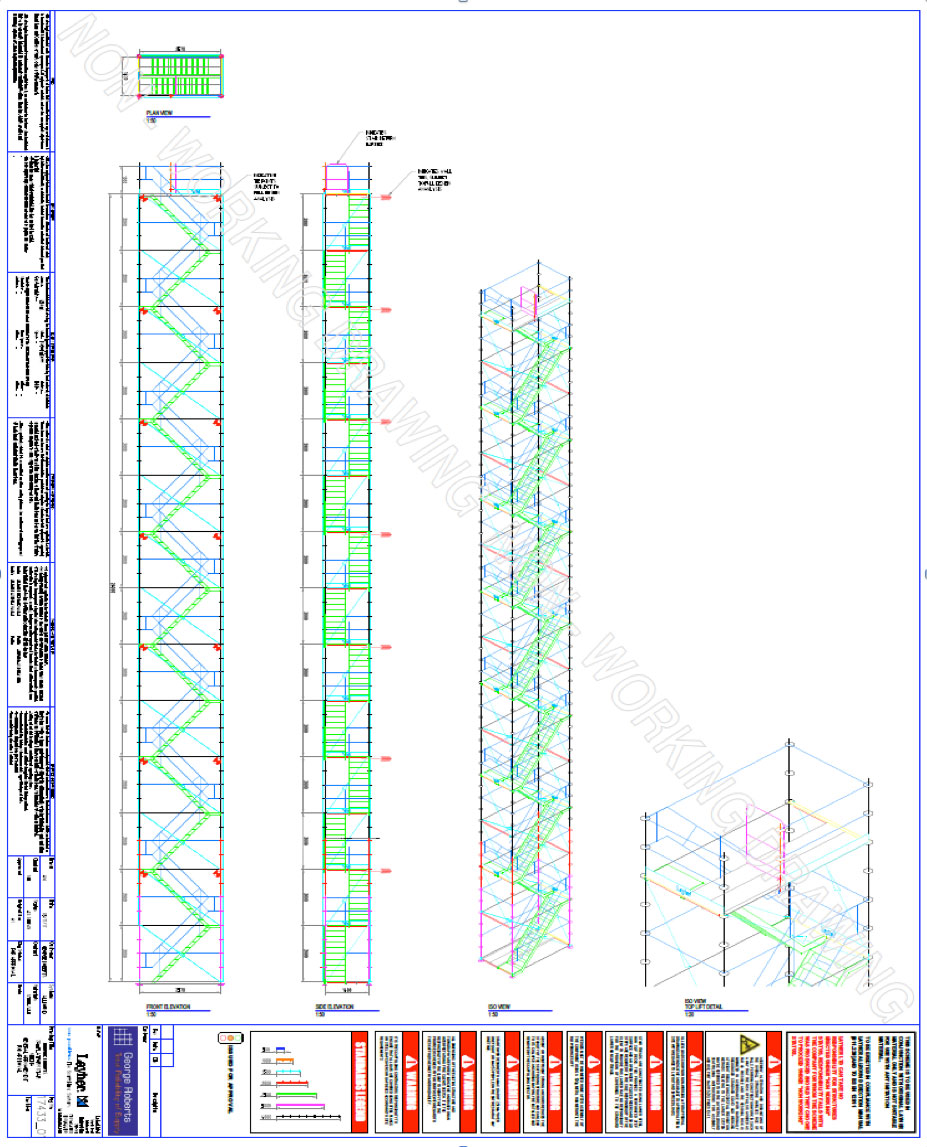

For unclad scaffoldings, there is one value, which is equal to 1.3. The aerodynamic force coefficient takes values with respect to the wind load direction: normal and parallel to the façade. The reference area for unclad scaffoldings is the total area of all components projected to the wind in the respective wind direction.

Where A i is the reference area, c f is the aerodynamic force coefficient, c s is the site coefficient, q i is the characteristic wind velocity pressure, and i is the index of the scaffolding element. The characteristic value of the resultant wind force, F, is calculated from the following expression: When the scaffolding is equipped with a protective cover, the characteristics of the wind action are different from those when the scaffolding is not covered. Wind action should be implemented separately in two different directions: perpendicular to the outer plane of the scaffolding and along the façade of the scaffolding. The design wind action on scaffoldings in Poland (and generally in Europe) is described by two codes,, which are supported by the wind code. Therefore, the proper assessment of this load is important during design and exploitation to provide capacity and serviceability limit states. It is impossible to distinguish one decisive reason for failures, but it is clear that wind action is one of the most important factors affecting scaffoldings wind action could potentially be the primary factor. These works show that all around the world independent of the scaffolding kind or the material used (aluminium, steel, bamboo) there are a large number of serious accidents, including fatalities, associated with scaffoldings. Reports and analyses related to scaffolding failures have been presented for Poland, UK, USA, Hong Kong, Scotland, the Netherlands, and Spain.

A great number of accidents in the construction industry, including fatalities, occur on scaffoldings (mainly falls from a height) and are generated by human or structural mistakes (deficient attachment to the building, defective elements, temporary overloading, deficient bracings) and, to a lesser extent, by wind action. Due to their temporary characteristics, scaffoldings are sometimes considered too lightly during design, assembly and exploitation, while any mistake made during any of these stages could cause serious accidents with injuries or even fatalities. Scaffoldings are temporary structures mainly erected on construction sites at the walls of new buildings and at the façades of already erected buildings that are under repair, renovation, modernization, etc. Initial analyses, illustrated by three scaffoldings without a protective cover, indicated large discrepancies between the approaches and the possibility of wind action, which is not considered in the codes. The results were compared with those based on the approaches recommended by the wind and scaffolding codes. The responses of structures to this action were computed via FEM simulations. On the basis of wind speeds, a procedure was suggested that enabled estimation of the static wind action on façade scaffoldings. Each measurement lasted 60 s, and the data were recorded every 1 s.

At each point, two components of wind speed were measured: first with the vane probe directed perpendicular to the façade and then parallel to the façade. The measurements were carried out 3–4 times during each day for 5 consecutive days. The measurement points were located on 2–3 deck levels of each structure and at 2–4 points placed in each level. Measurements of climatic parameters were carried out for a number of façade scaffoldings (120 structures) located in Poland over a 30-month period. The main objective of the study was to estimate the mean horizontal wind action on a façade scaffolding on the basis of full-scale data.


 0 kommentar(er)
0 kommentar(er)
